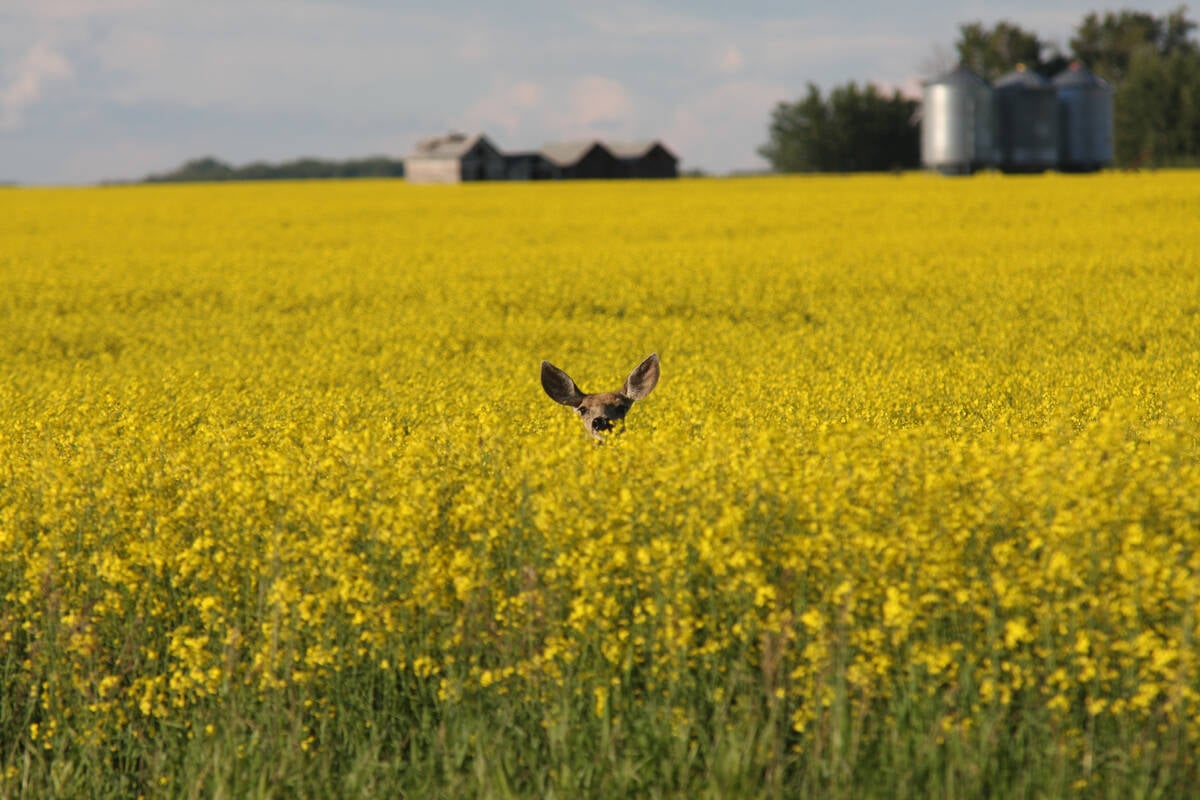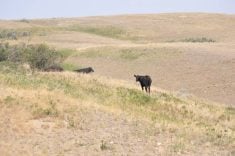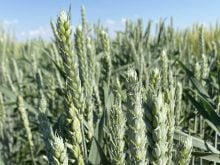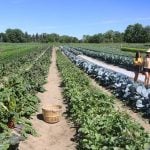The evidence of damage is still largely anecdotal.
Until harvest, the dollar damage of this year’s hot dry weather across most of the country will not be figured out.Still, there is no doubt the summer of 2001 is taking its toll on farms across the country.
The signs are everywhere across the land – stunted potatoes in Atlantic Canada, lethargic dairy cows and chicken layers producing less this summer, a prairie grains and oilseeds crop expected to be off by as much as five million tonnes and an Ontario corn crop being downgraded by the day.
Read Also

Drones now used to assess wildlife crop damage in Saskatchewan
Wildlife damage in Saskatchewan crops is now assessed by drones and artificial intelligence.
In many parts of the country, cattle producers already are feeding winter feed or buying hay. Pastures are bare and second forage cuts are non-existent.
In British Columbia’s Okanagan Valley, heat has moved in as a long-range forecast and there are worries that it could extend into apple harvest in two or three weeks, damaging the crop as 1998 did.
Everywhere, fans are running longer, cooling systems are going full blast and farmers are looking at mounting costs.
“For farmers, it is becoming a catastrophe,” said Environment Canada’s David Phillips during the weekend as CBC radio devoted two hours of national air time to the weather.
Agricultural officials are not ready to make that rhetorical leap yet, but everyone is predicting that farm income safety nets will be strained this autumn and winter, perhaps leading to another round of farmer pressure for more government help.
Canadian Federation of Agriculture president Bob Friesen said the extreme weather will push the crop insurance system, raise again the “very difficult” question of whether farmers without crop insurance should be helped, and show the flaws in the national farm income disaster program.
“It simply in many cases will not get enough money out fast enough to where it is needed,” he said. “The worse the disaster, the more the flaws in the system stick out.”
An Ontario government official agrees that farmers will be looking for help.
“I think it is certain there will be more demand on the programs and more strain on the resources available to them,” said Greg Stewart, a crops specialist with the Ontario agriculture department who has spent the last month watching prospects in his province shrivel.
“The conditions are pretty widespread across the province. We have downgraded our corn expectations from 120 bushels per acre to 106 and every dry day makes it worse.”
At Indian River, Prince Edward Island Federation of Agriculture president Kenny MacLellan agrees with the prospect of increased safety net demands.
“For sure it will put a strain on what is there,” said the farmer who has watched his potatoes stunt, his grain wilt and his cattle struggle. “The plants are very stressed and yields will be down significant. But I’m not sure that the programs we have there will help us when we need the money.”
On his farm, from late June through early July, there were 38 consecutive rainless days, followed by a shower that produced less than five millimetres and then this past week, more dry weather.
“I think the crop will be off 30 to 40 percent.”
Across the country, there are snapshots of growing unease, sometimes bordering on resignation:
- In Truro, N.S., Nova Scotia Federation of Agriculture manager Laurence Nason tells of visiting a livestock operation on which the farmer already is dipping into his winter feed. “There will be no second or third cut. He’ll be out of feed by January. Does he hang on or sell cattle now when the prices are good?”
Livestock represent half the provincial farm economy, but the orchards of the fertile Annapolis Valley also have been hit. In some areas of the province, this is the third drought in four years.
- Near Guelph, Ont., corn producer and lobbyist Terry Daynard watches his dry fields and remembers the drought of 1988 when yields were down close to 30 percent. “If this continues, it will turn out to be worse than ’88,” he worried.
- In southern Alberta, CFA president Friesen toured a 16,000-acre pasture. “It looked like pavement. I’ve never seen anything like it.”
Of course, as if to show that Mother Nature has a sense of humour, some parts of the country saw farmers in trouble last week because of too much water.
As the Winnipeg-based Canadian Wheat Board was announcing a 20 percent decline in expected yield prairie-wide, Manitoba farmers were watching crops damaged and in threat of rot because of excess rainfall and humidity.
In Alberta, Alan Hall of the provincial agriculture department’s plant industry branch noted that a large area of his province is desperate for rain while in areas of the Peace, north of Edmonton and in the northwest, there has been excess moisture.
“It is a case of extremes,” he said. “One foot is in a bucket of water and the other is being scorched.”
For Kevin Muxlow, executive director of Grain Growers of Canada, the irony is that grain prices are beginning to strengthen.
“We have always said to get prices up, we’d have to have a drought somewhere,” he said. “We just didn’t want it here. Now, bins will be empty, fields are bleak and markets are moving.”














